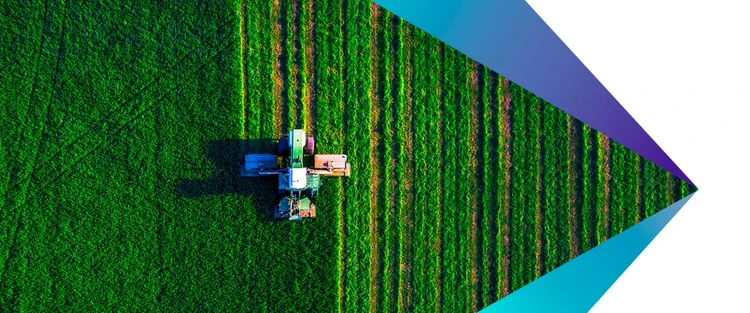
Sustainable farming, with a digital twist styles-h2 text-white
<p><span class="medium"><br>September 7, 2023</span></p>
Sustainable farming, with a digital twist
<p><b>Regenerative agriculture uses digital tools to help farmers repair the earth while growing crops. The challenge is doing so in an economically viable way.</b></p>
<h4>In the news</h4> <p>You may not be thinking about saving the planet when you’re buying a pint of ale, shopping for an outfit or slathering mayo on your sandwich. Increasingly, though, the makers of those products <i>are</i> thinking that way.</p> <p>A number of high-profile businesses are embracing, or at least talking about, regenerative agriculture—<a href="https://www.environmental-finance.com/content/analysis/the-need-for-regenerative-agriculture.html" target="_blank" rel="noopener noreferrer">generally defined here</a> as "a system of principles and practices that generates agricultural products, sequesters carbon, improves soil health and enhances biodiversity at the farm scale."</p> <p>The idea is that the ingredients that make up our <a href="https://www.ift.org/news-and-publications/digital-exclusives/ift-first-23-regenerative-agriculture" target="_blank" rel="noopener noreferrer">food</a> and <a href="https://www.diageo.com/en/news-and-media/stories/2023/good-things-are-taking-root-as-guinness-continues-its-regenerative-agriculture-pilot" target="_blank" rel="noopener noreferrer">drink</a>, the <a href="https://www.voguebusiness.com/sustainability/a-new-framework-for-regenerative-agriculture-wants-to-help-fashion-measure-impacts" target="_blank" rel="noopener noreferrer">textiles</a> from which our clothes are made and other products should push <a href="https://www.cognizant.com/us/en/insights/perspectives/sustainability-in-business-beyond-green-to-deeply-green-wf1518050" target="_blank" rel="noopener noreferrer">beyond sustainability</a> to actually help reverse the degradation of the world’s soil.</p> <p>Companies that have embraced the concept include Diageo (parent company of Guinness), Unilever, The North Face, General Mills, PepsiCo, Walmart and plenty more. But as with other initiatives that fall under the environmental, social and governance rubric, the devil is in the details; it’s not always easy to distinguish commitment from a PR push.</p> <p>So, to what extent does a corporate embrace signal real change in the relationship between humans and the environment? And what are the potential consequences of this change for global food systems?</p> <h4>The Cognizant take</h4> <p>“There’s been a big push in the food and beverage industry for the last five years or more,” says Jenny Edwards, Principal Sustainability Advisor at Cognizant's Sustainability Services practice. “It’s widely viewed as an important step in ethical, sustainable sourcing, so there’s a lot of momentum—especially in the US.”</p> <p>Interestingly, regenerative agriculture takes farming back to its roots (groan) in many ways. It’s less intensive than the farming of the past half-century, which has focused ruthlessly on gross yield. By contrast, Edwards says, regenerative agriculture “is about crop rotation, and growing what <i>should</i> be grown in a particular region, not what economics <i>wants to see</i> grown.” With fewer chemicals and integrated pest management, “you could say it’s like farming in the 1850s,” she adds.</p> <p>And there’s the rub, because we are by no means living in an 1850s economy. The challenge around regenerative agriculture is to gain sustainability benefits while keeping farming economically viable. When farmers adopt the new (old) ways, “they don’t save money immediately,” Edwards notes. In the long run, they benefit from better soil and stronger plants—but the transition costs money.</p> <p>Digital technology has a big role to play in this transition, and in regenerative agriculture in general. The push is on to use 21<sup>st</sup>-century tools like drones, satellites and sensors to gather and analyze enough data to establish key performance indicators and metrics. Going forward, farms that can claim to practice regenerative agriculture will gain competitive advantage—but creating a level playing field for such claims across countries, regions and crops is a challenge.</p> <p>Moreover, doing all this “without increasing the data burden on farmers” is a must, Edwards notes; it’s already a tough way to make a living.</p> <p>Despite the obstacles, increasing awareness around biodiversity and sustainability is driving the industry back to the good old days—with a modern twist.</p>
<p>Understand the transformative impact of emerging technologies on the world around us as they address our most significant global challenges.</p> <p><a href="mailto:editorialboard@cognizant.com">editorialboard@cognizant.com</a></p>
